Striking the balance: differentiation vs similarity

How can MMC companies strike the balance between differentiation and similarity?
Among the kaleidoscope of colours within the avian kingdom, the zebra finch holds a fascinating philosophy for survival. Despite their vibrant plumage, these birds prefer partners with similar traits, a practice known as ‘assortative mating.’ This choice of familiarity over uniqueness is not an accident but a strategic move for future generations to thrive in local environmental conditions. It seems that in the natural world, standing out has its value but only within the framework of similarity.
The 1960s, advertising magnate, Rosser Reeves, fervently promoted the idea of unique selling points (USPs) as the ultimate magnet for customers. This belief has permeated many industries, including modern methods of construction (MMC). Manufacturers strive to carve their niches with their ‘unique product solutions’, creating a vibrant, albeit perplexing, market of difference.
Yet, this distinctiveness, paradoxically, spotlights concerns of choice, insolvency risk and potential single points of failure. In a quest to break away from the pack, individuality has become a collective stumbling block.
How can MMC companies strike the balance between differentiation and similarity? The solution, curiously, might lie in John Nash’s equilibrium theory and examples from nature. Nash, a Nobel laureate, proposed that optimal outcomes occur when each member works in both their individual and collective interests. Vampire bats, surprisingly, epitomise this principle, sharing food with less successful hunters, as a long-term pact of mutual survival, demonstrating an elegant balance between competition and cooperation… co-opetition.
In truth, the majority of manufacturers share more in common than they typically acknowledge. Many systems share consistent principles, supply chains and even details – however the drive for individual survival has ironically fashioned a market barrier – a shared challenge arising from individual actions.
At Akerlof we believe a cooperative shift could reverse this deadlock. If industry leaders were to pool their knowledge through alliancing, foster collaboration and synchronise their actions, they could invoke a Pareto improvement* – in growing the pie for all. The Seismic consortium has successfully demonstrated the principles of co-opetition, enhancing the unique propositions of Algeco and McAvoy collectively.
To carve a path towards progress, the industry needs greater synchronisation, guided by insights from game theory** and the wisdom inherent in nature. They need to discern when to be distinctive and when to align with others. By doing so, they can address the collective challenge of perception and the anxiety surrounding interchangeability.
Success is often a matter of collective effort, of walking together towards a common goal.
*A Pareto improvement is an improvement to a system when a change in allocation of goods harms no one and benefits at least one person.
**Game theory is a way of studying how people make decisions when they interact with each other in different situations. It helps us understand how people try to predict what others will do and how they choose their actions based on those predictions.




